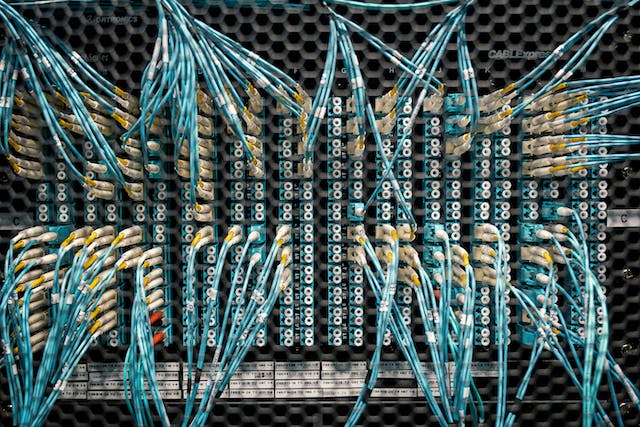In the ever-evolving world of telecommunications, fiber optic technology stands as a pivotal advancement, offering many benefits over traditional cabling systems. As a beginner, navigating through the complex landscape of fiber optics can be daunting. This guide aims to demystify fiber optic cables, focusing on their types, functionalities, and the significance of choosing the right one for your needs.
Understanding Fiber Optic Cables
Fiber optic cables are long, thin strands of pure glass about the diameter of a human hair. They are designed to carry digital information over long distances using light signals. The core of these cables, which is responsible for transmitting light, is encased in a cladding layer that reflects the light into the core, preventing signal loss and allowing the light to travel great distances, and they allow for data to be carried faster than with other types of cables.
Types of Fiber Optic Cables
Fiber optic cables are broadly classified into single-mode fibers (SMF) and multi-mode fibers (MMF).
Single-Mode Fiber (SMF): These fibers have a small core (about 8-10 micrometers in diameter) and are designed to transmit light directly down the fiber. The small core size virtually eliminates any light reflection within the cable, allowing the signal to travel further without attenuation. SMFs are ideal for long-distance telecommunication networks.
Multi-Mode Fiber (MMF): MMF cables have a larger core size (about 50-62.5 micrometers in diameter) compared to SMF. They are designed to carry light signals over shorter distances, like through larger buildings. The larger core size allows multiple modes (or paths) of light to propagate through the fiber. However, this can cause the signal to spread over longer distances, which is why MMFs are typically used for shorter runs, like within a building or on a campus.
Single Mode Fiber Types
When it comes to single-mode fiber cable types, there are several standards, each designed for specific uses and distances that need to be considered. The most common types include OS1 and OS2. OS1 is typically used for indoor applications, such as in data centers or office buildings, where the distances are relatively short. OS2 is designed for outdoor use, including undersea cables, where long distances are involved.
Comparing Fiber Optic Cable Performance
The performance of fiber optic cables is often measured in terms of bandwidth, attenuation (signal loss), and transmission speed.
Bandwidth: MMF cables typically offer a higher bandwidth over short distances, making them suitable for data and multimedia transmissions in local area networks. SMF, on the other hand, offers a lower bandwidth but is more efficient over longer distances.
Attenuation: SMF cables have a lower attenuation rate compared to MMF, which means they can transmit signals over longer distances without significant loss of signal quality.
Transmission Speed: Both SMF and MMF support high data transfer rates, but the stability and quality of transmission are better in SMFs over long distances.
Choosing the Right Fiber Optic Cable
Selecting the right type of fiber optic cable depends on various factors, including the distance over which the data needs to be transmitted, the data transmission speed required, the network environment, and budget constraints, to name a few. For short-range, high-bandwidth applications within buildings or campuses, MMF is typically the go-to choice. For long-distance telecommunications or high-quality broadband connections, SMF is more appropriate.
Installation Considerations
Installing fiber optic cables requires precision and expertise to be done properly. The cables are fragile and can be damaged if bent beyond their minimum bend radius. Moreover, the connectors and splicing techniques used for SMF and MMF differ, further emphasizing the need for professional installation and handling to be installed optimally.
Future of Fiber Optics
The future of fiber optics looks promising with continuous advancements in technology. We are seeing the development of fibers with even lower attenuation rates and higher bandwidth capacities. This evolution is paving the way for faster, more reliable internet and communication services worldwide.
Insights and Takeaways
As we delve into the realm of fiber optics, the distinction between different types of cables becomes crucial for efficient network planning and implementation. Understanding the nuances between single-mode fiber types and multi-mode fibers, along with their respective applications, is key for anyone venturing into the field of fiber optic communications. With the right knowledge and considerations, fiber optics can unlock unparalleled potential in telecommunication and data transmission, paving the path for a more connected and faster world.




